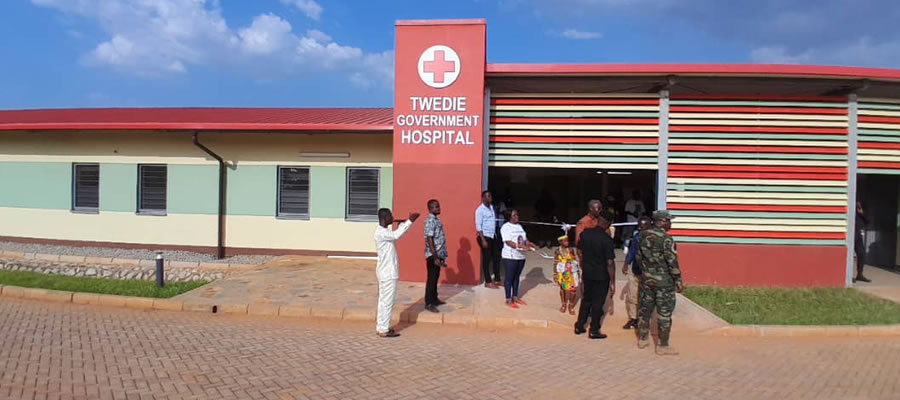

Problems affecting Agriculture in the District and the way forward
The agriculture subsector is confronted with the following problems:
i Low production /productivity: Most of the operators in this sector heavily rely on the traditional and obsolete farming methods. Only a few percentages of farmers use modern, improved farming technology due to poor attitude to the improved methods of farming. The low production is also due to high cost of labour/inputs, land tenure system, over dependence on government for the supply of inputs and ageing farmers.
ii. Over-dependence on rain-fed agriculture: Agricultural activities in the district are tied to rainfall. The rainfall regime therefore affects the production levels. The unreliable rainfall distribution is a major cause of fluctuation in a major cause of fluctuation in crop production. Added to this are the seasonal nature of rivers/streams and the high cost of irrigation equipment.
iii. Limited access to credit: Almost all the farmers in the district, especially food crop farming, have no access to credit but depend on their own resources to operate. This causes the farmers to sell their crops to the market women who sometimes finance them at low prices immediately after harvest. The other sources of credit to the farmers include private money lenders and financial institutions whose demand the farmers cannot afford.
iv. Lack of storage facilities: Storage facilities are not available in the district to store food crops after harvest resulting in high post-harvest losses which have negative impact on the economy.
v. Inadequate number of Agriculture Extension Agents (AEAs): There are only 9 AEAs in the district meaning the extension offer –farmer ration is 1: 5,030 compared to the national standard of 1:300. The inadequate number of AEAs adds to the farmers’ unwillingness to change.
vi. Limited market and infrastructural back-up: Even though the district is close to Kumasi, the regional capital, the poor nature of the roads, the unprocessed nature of the crops and market restrictions prevent the farmers from taking advantage of the proxity to the regional and metro market.
vii. High cost of farming inputs: the low income levels of the operators in this sector as a result of low production have prevented the farmers from being able to purchase farming inputs at high cost.
viii. Pollution of Water Bodies: Water bodies are being polluted by the use of chemicals especially by vegetable farmers.
Way Forward
• Efforts are being made to bridge the AEA /Farmer ratio gap
• Farmes are encouraged to form groups to enable them access credit facilities from financial institutions.
• Provision of storage facilities
• Credit in kind to unemployed youth through the Block Farm system.
Agric Extension Agents
The District has 9 Agricultural Extension Officers. About…..% of farmers have access to agricultural extension services within the District. The present extension officer-farmer ratio 1: 5,030 with the standard extension officer –farmer ration is too high and this prevents the extension officer from reaching all the farmers in the district. This implies that most farmers still use traditional methods of farming which leads to low production capacity.
Agric Extention agent–farmer ratio in the district is presented in the Table below.
More Agric Extenstion Agents are therefore needed to provide technical expertise and know-how particularly in the fish and poultry subsectors. Logistics such as motor bikes and vehicles are therefore needed to be provided to the few available officers to improve their mobility.
Livestock and Poultry Farms
Livestock activities especially poultry farming in the District is mostly done on commercial bases
Date Created : 11/23/2017 8:02:38 AM












 facebook
facebook
 twitter
twitter
 Youtube
Youtube
 +233 593 831 280
+233 593 831 280 0800 430 430
0800 430 430 GPS: GE-231-4383
GPS: GE-231-4383 info@ghanadistricts.com
info@ghanadistricts.com Box GP1044, Accra, Ghana
Box GP1044, Accra, Ghana